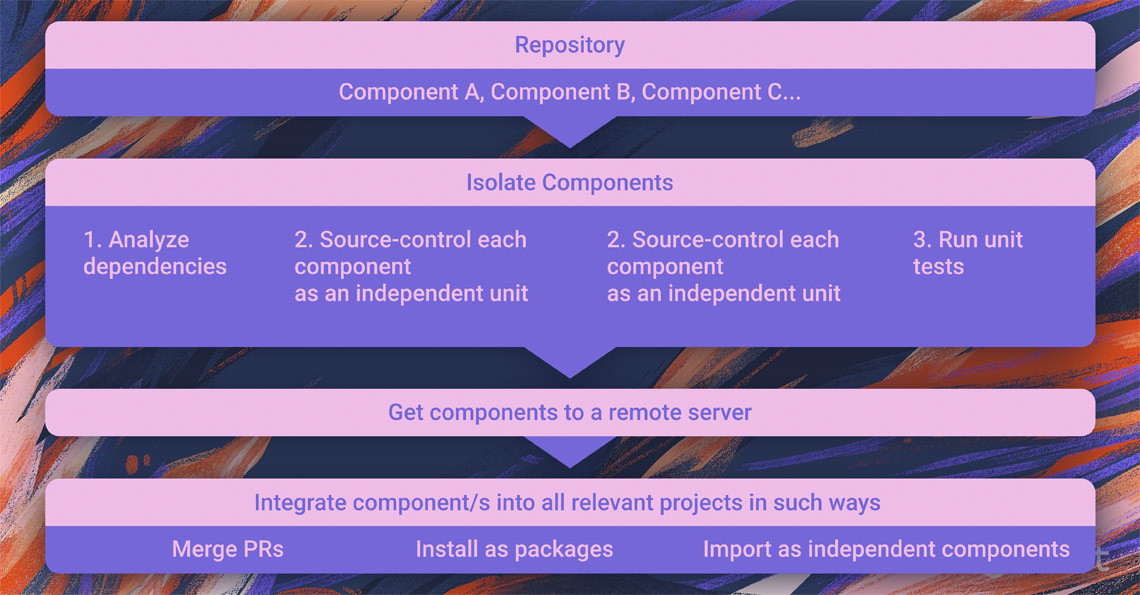How CI/CD Automation Saves Money and Time
-
6369
-
11
-
8
-
0
For more than 10 years DevOps implementation has been an extremely desired goal for many IT businesses. And, with pandemic 2020 raising its ugly head, all the time limits for DevOps adoption, in general, and CI/CD application, in concrete terms, have noticeably shrunk. According to CircleCI CEO Jim Rose, COVID-19 has considerably squeezed the time that organizations needed to reach CI/CD. IT businesses rapidly caught that archaic on-premises Jenkins running is not an option anymore, especially in today’s hybrid or even remote-only flows. However, even before the pandemic struck the world, companies were turning to CI/CD automation. A need for CI/CD automation appeared when developers got tired of endless and exhausting manual testing and committing their code to the core repository every time any change took place. This can happen a couple of times a day, sometimes much more. As a result, developers wasted hours, days and even weeks on laborious, repetitive, hand-operated testing and deploying, which is not influencing their productivity positively. How automated CI/CD pipelines can help IT organizations save money and developers’ wasted on toil time, will be covered here.
How CI/CD automation helps save time compared to manual deploying
Today developers can make dozens/hundreds and in some cases thousands of changes to their main software daily, so it’s even hard to imagine how much time the process of tasting and delivering those changes would take, if done manually. Taking plenty of toil out of SDLC is the key point of DevOps, which is all about delivering high-quality software and features as fast as possible and gaining swift feedback from customers. DevOps promotes CI/CD automation, as with CI/CD properly set-up and programmed, product delivery speed evolves notably. In fact, Puppet experts in their recent report identified that organizations utilizing CI/CD practices deploy 46x more frequently and spend up to 44% more time on creative work.

How CI/CD automation helps save money compared to manual deploying
From IT experts’ point of view the significance of DevOps methodology, in general, and CI/CD automation, in particular, is quite clear. However, for some leaders, it might be hard to follow how the whole investment in CI/CD tools (pretty often very sizable) can be beneficial in the end. If this is your case, let’s discuss how CI/CD automation can lower costs for your organization. Fast/frequently released software and features save not only time but also cut down on:

- Deeply expensive downtime. Long-term downtime does not only influence your revenue negatively but also undermines your company’s credibility.
- Troubleshooting costs. With CI/CD pipeline properly automated, the process of the product deployment and release is more reliable and developers are not wasting hours on bug-fixing.
- Switching/onboarding costs. Automated CI/CD let new members of the team get down to business right away without having to deal with an exhausting learning curve.
- Staff turnover costs. Happy employees — more successful company! When developers are freed from manual, repetitive tasks, they focus on creating new features and code and continuous quality improvement, isn’t that right? Sure, it is. With them knowing they can rely on their system, employees become more relaxed and satisfied and, as a result, they stay with you, work harder and become more and more in love with the company.
How to implement CI/CD automation
With CI/CD pipelines you can have constant integration, software in a releasable condition upkeeping, continuous testing/monitoring and fast reaction to issues. For those who are already thinking of switching from manual to fully automated deploying we can give the following recommendations:
- Make tests for the significant bits of the codebase.
- Use a CI tool to run the tests when clusters of code are incorporated into the branch.
- Settle any issues just as you spot them.
- Make a separate test for each story.
- Use automated CD tools to initiate the code in the new environment.
- Utilize CD pipelines for monitoring and alarms to have full supervision over the flow.

Why is CI/CD better with DevOps?
With CI/CD introduction, the process of code building, testing, committing the altered versions back to the core repository and rapid deployment to the user’s environment anytime when needed is fully automated, which spares developers much of their time and nerves. Gitlab experts in their 2020 DevSecOps survey claimed that more than 80% of developers started releasing their code more frequently and more than 50% of companies started releasing a couple of times a day, compared to recent once a week/month realization. On the other hand, improperly implied, CI/CD pipelines will not only be inefficient but also significantly delay the software delivery process. That’s where DevOps saves the day. You cannot adopt one or a couple of CI/CD tools and consider your mission complete. No, it doesn’t work this way. You need DevOps holistic approach to automate CI/CD pipelines properly. In the nutshell, you need to choose the right CI/CD tools, build pipelines which should be simple, fast, free of bottlenecks and secure. And, in addition, they should be run in segregated environments, containers help you, and many more issues to consider.

To set up and automate CI/CD pipelines correctly is not a piece of cake, especially for small businesses and startups that experience a lack of skilled specialists. If this is your case you should turn to DevOps companies that provide DevOps services. Their teams will establish and automate simple, fast and secure CI/CD pipelines for your team to become more productive, and for your business to grow. As an example we, at IT Svit, worked on improving a Druid instance for Big Data analytics platform on AWS and one of the project requirements we set planning and building CI/CD pipeline utilizing Jenkins. Before CI/CD automation it took one hour for the cluster to update. But after our DevOps experts configured and automated CI/CD pipeline the upgrade takes only 15 minutes.
Final thoughts
To finish the story, we’d like to stress that if you want to rapidly release high-performing and client-focused software with notable teams’ productivity improvement, you should automate your SDLC at most. CI/CD automation is a smart solution for developers who don’t want to waste their time and energy on completing repetitive assignments but desire to concentrate on new products/features creation. What’s more, CI/CD pipelines, when properly automated, allow teams to swiftly react to bugs/errors and immediately fix them that significantly increases customers’ satisfaction. On the other hand, CI/CD set-up and automated incorrectly might not only be inefficient but also cause delays and unreasonable spending. CI/CD automation is one of the numerous DevOps practices, and if you are thinking of adopting the DevOps methodology, it’s about time to do so. At the same time, it might be rather overwhelming for companies to grow the in-house DevOps team, particularly for small businesses and startups. In such cases, the best solution is to turn to mature DevOps companies that provide DevOps services to streamline your workflow. DevOps experts will design and implement an automation strategy for you and provide your team with total support and tech documentation.
